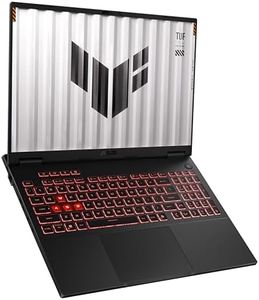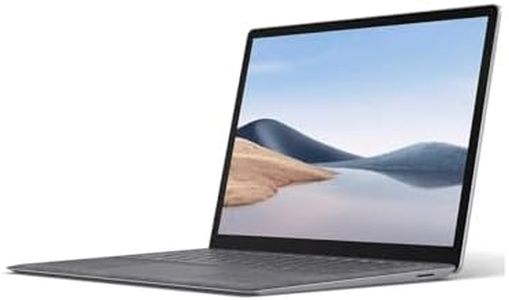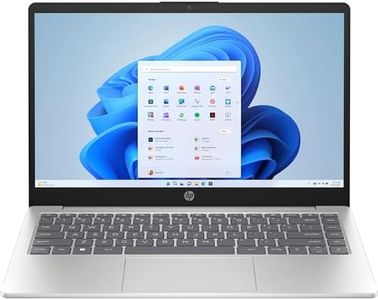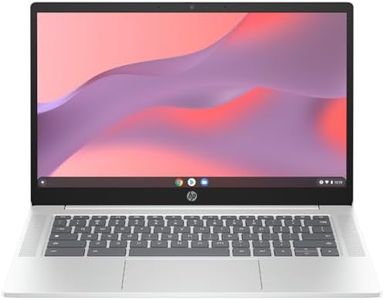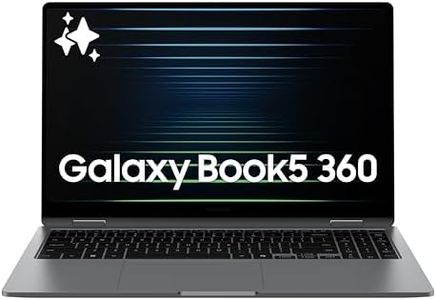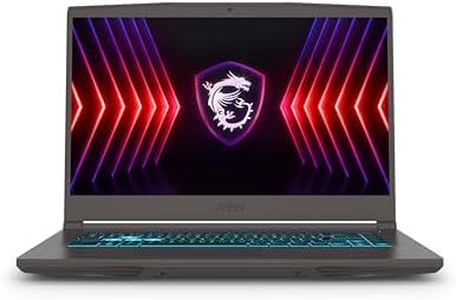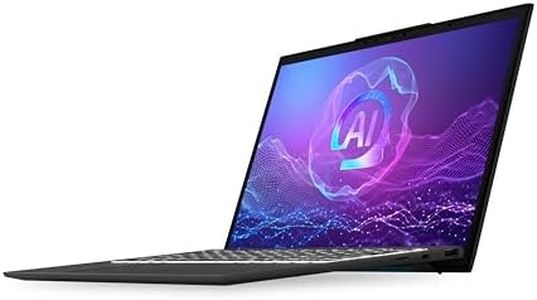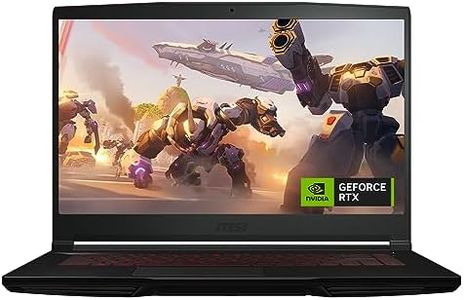We Use CookiesWe use cookies to enhance the security, performance,
functionality and for analytical and promotional activities. By continuing to browse this site you
are agreeing to our privacy policy
10 Best Laptop Computers
From leading brands and best sellers available on the web.Buying Guide for the Best Laptop Computers
Choosing the right laptop can have a big impact on how effectively you work, study, or enjoy your entertainment. Rather than focusing only on brand or appearance, it’s important to understand what features actually matter for your lifestyle. Start with how you'll use the laptop: web browsing, office work, creative projects, gaming, or something else. Each use has ideal specs that can help it run smoothly and efficiently. Below are the key specifications you should pay attention to, what they mean, how to understand their values, and guidance on how to choose each based on your needs.Processor (CPU)The processor, or CPU, is like the brain of your laptop—it handles all instructions and tasks. It's important because it determines how quickly your laptop can run programs and handle multitasking. Processors generally come in three broad levels: entry-level, mid-range, and high-performance. Entry-level CPUs are fine for basic tasks like browsing and word processing; mid-range CPUs are better for multitasking, light content creation, or light gaming; and high-performance CPUs are essential for demanding applications like video editing, programming, or gaming. Choose a CPU that matches the intensity of your typical tasks.
Memory (RAM)RAM is temporary storage that helps your laptop juggle multiple applications at once. More RAM allows you to open more tabs and programs without slowing down. Typical segments are: 4GB (light use, occasional browsing), 8GB (comfortable for most users, moderate multitasking), 16GB (excellent for heavy multitasking, advanced creative work), and 32GB+ (needed by professionals with very demanding workloads). Choose RAM based on how many programs or browser tabs you keep open and whether you use memory-hungry software.
Storage (HDD/SSD)Storage is where all your files, programs, and system data are saved. There are two main types: HDD (hard drive) and SSD (solid state drive). SSDs are much faster, leading to quicker start-up and file loading, and are generally preferable. Storage size is divided into smaller capacities (128GB–256GB for light users who mostly use cloud storage), moderate (512GB is comfortable for most people’s needs), and large (1TB or more for those with lots of media or large files). Think about how much data you store and whether you prefer speed over capacity.
Display (Size and Resolution)The screen size determines both how large your laptop is and how easy it is to view content. Popular sizes are 13-14 inches (good for portability), 15-16 inches (balance of screen space and portability), and 17 inches (desktop replacement, better for stationary use). Resolution refers to how sharp the image is; FHD (1920x1080) is the standard, while higher resolutions (QHD, 4K) are sharper and better for creative work. Choose size based on how often you carry your laptop and your comfort level, and pick resolution depending on how crisp you want images and text.
Battery LifeBattery life lets you know how long your laptop will last on a single charge. It's especially important if you work away from a power outlet. Short battery life (4-6 hours) is manageable for those mostly plugged in; moderate (7-10 hours) fits most people's needs; and long battery life (10+ hours) suits travelers or students who need all-day usage. Consider how often and for how long you'll be away from power.
Weight and PortabilityThis spec tells you how easy the laptop will be to carry around. Lightweight laptops (under 3 pounds or 1.5 kg) are best if you travel or commute often, mid-weight (3–5 pounds) are a balance for occasional travel and desk use, while heavy laptops (over 5 pounds) are better if they’ll mostly stay in one place. Decide based on whether you’ll be on the go or mostly stationary.
Graphics Card (GPU)The graphics card handles visuals and is crucial for gaming, video editing, and certain creative tasks. Integrated graphics (built into the processor) are enough for everyday tasks and media playback. Dedicated graphics (an additional GPU) are important if you play games, edit videos, or use design software. Think about whether you run graphics-heavy programs, otherwise integrated graphics should be sufficient.
Ports and ConnectivityPorts determine what devices and accessories you can plug in, like USB devices, monitors, headphones, or SD cards. More and varied ports give flexibility. Some laptops have mostly USB-C, while others provide HDMI, USB-A, and card readers. Assess what devices you routinely use (like projectors, external drives, or printers) and ensure the laptop has the corresponding ports.
Build Quality and KeyboardBuild quality impacts durability and feel. Metal builds are sturdier; plastic ones can be lighter and less expensive. A comfortable keyboard is important if you type a lot. Key travel (how far the keys press down), spacing, and backlighting can make a difference. Consider how often you’ll type or travel, and if you need spill resistance or ruggedness.
Operating SystemThe operating system (Windows, macOS, or Chrome OS) determines the software you can use and your general experience. Windows is versatile, macOS is smooth and often preferred for creative work, while Chrome OS is streamlined for web-centric use. Think about what software you need and what system you’re already familiar with.
